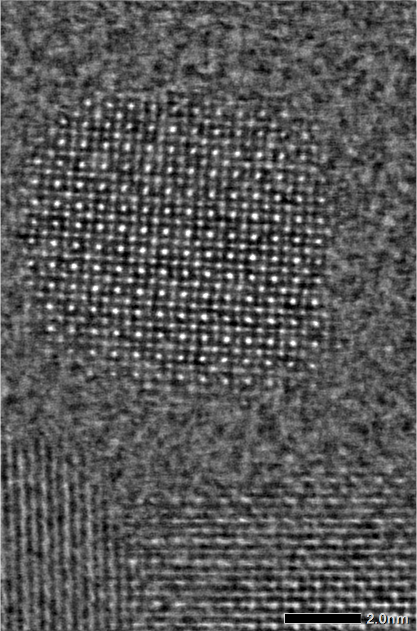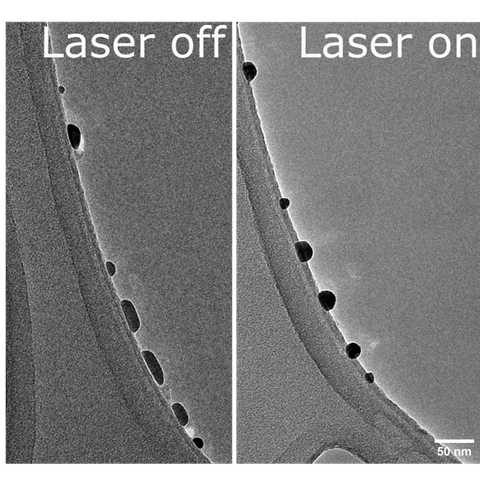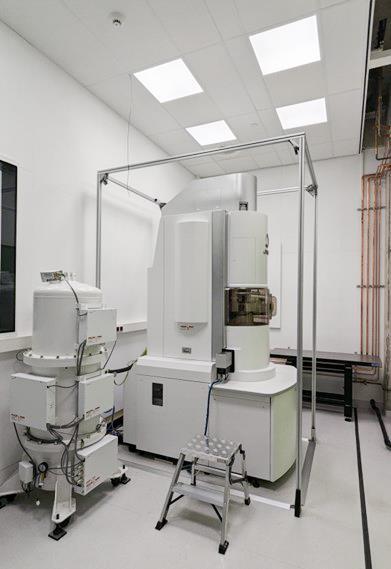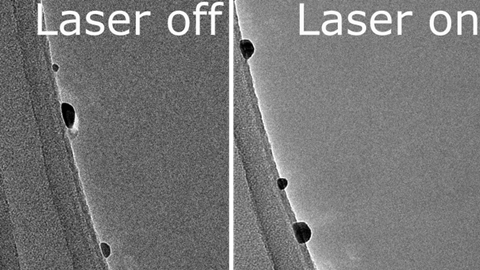Everything, all at once - that would be a suitable tagline for SHINE, the brand-new TEM facility at AMOLF in Amsterdam. ‘Now we can study real-world materials in real-world conditions, both in space and time.’
For those of you looking for the latest in advanced microscopy for materials research: check out the brand-new TEM facility at AMOLF. Dubbed SHINE, ‘Shining light on atomic scale processes’, this JEOL Transmission Electron Microscope boasts light incoupling, very fast detection technology ánd can accommodate a wide variety of sample holders. ‘What makes this equipment so special is that we can get very good spatial resolution, to the atomic level, and do fast time resolved measurements at the same time’, says Erik Garnett, group leader Nanoscale Solar Cells at AMOLF.

CsPbBr3 nanocubes in solar cell material, the scale bar is 2 nanometer
Beeld: JEOL
‘Additionally, you can use any kind of holder which allows you to study real-world materials, like a piece of an actual photovoltaic panel. This is the next step in in situ, in operando measurements. Studying real-world materials in real-world conditions, both in space and time.’
Transient phenomena
According to Garnett, this is a unique facility in Europe and perhaps in the world. ‘In a normal TEM, it is hard to get light in. But this one has a tiny mirror that allows a laser beam to travel with the electron beam at the same time.’ Using light, in combination with fast detection, enables a whole range of phenomena to be studied. Non-biological materials are still perceived as very static, but there is plenty going on that so far has remained out of reach for scientists to study. ‘Lighting up the material leads to a local increase in temperature, which is very short-lived but can influence the material. By applying light pumping, we get snapshots of the material, which we can retrieve thanks to the very fast detectors. This way, you can study transient phenomena. A further advantage is that this approach is much less destructive for your samples’, Garnett explains. ‘All in all, these measurements enable us to study what exactly happens in and on the material when this fast heating and subsequent cooling occurs.’

This is, for example, relevant for catalyst particles as it is known that their surface structure can change during temperature changes. ‘With this TEM set-up, we can identify the exact structure of the catalyst under such changing conditions, bringing these transient effects within reach. This is also very relevant for the new field of dynamic catalysis. We know that oscillating conditions, whether it is light or strain or temperature, affect catalyst performance. We can measure those changes in performance, but we don’t yet know what exactly causes these changes. Now, we have the opportunity to tackle these questions. This really is a huge push for the in operando field.’

Garnett points out that the AMOLF TEM is open to anyone with a relevant proposal. ‘But we prioritize experiments that really deploy the capabilities of this particular facility.’
Check amolf.nl/tem for more information, requirements and how to submit proposals for measurement time. The team can be contacted at: support.nanolab@amolf.nl.













Nog geen opmerkingen